THIS POST INCLUDES:
1. Paper as Basic Art Supplies
2. Types of Paper
3. 5 Suggested Papers
4. Free Download Art Therapy Supplies List
PAPER AS BASIC ART SUPPLIES
Using paper is the most accessible and affordable substrate for creating paint, drawing, and collage-based artwork. Collage based artwork can be created on almost any paper surface, however, different paper surfaces will affect the outcomes of paint and drawing based artwork.
Paper is also an easy resource to store in your art therapy studio. It is lightweight enough to hang for drying and compact enough to store in folders, drawers or filing cabinets.
PAPER WEIGHT
If your client is using wet or dry based art materials this will dictate the thickness (weight) of the paper used. If a lightweight paper is used with wet art materials such as acrylic paints or watercolours, your paper may end up with buckling, curling, holes, rips and paper peeling. These results can be disappointing after investing your creative efforts in your artwork.
Paper weight is usually stated in lbs. The higher the number is, the thicker your paper will be. The higher weighted papers are usually more expensive than lighter weighted papers.
As a reference guide, normal photocopy paper is around 80gsm. This would be suitable for pencil drawings and some pen drawings, however, marker pens and other pens with a more fluid ink will easily bleed through. Thin weighted papers can be used for collage, however, the application of glue will result in the paper buckling.
At the other extreme, a very thick paper will have a weight of about 300lbs. This paper is great for watercolours, acrylic paints and oil paints. This paper is also good for mixed media applications using a variety of art mediums. The thicker weighted papers can sometimes present problems with collage. Collage requires a degree of flexibility and manipulating paper and this might be restricted with papers that are closer to board thickness.
Papers that are in the middle of the thin and thicker papers usually measure around 100-140lbs. These papers are good for dry mediums as well as markers, paints and wet mediums. Depending on the amount of water used with watercolours, you still may experience a small amount of buckling and curling with the middle weighted papers, however, as they are less expensive than heavier weighted papers, this range of paperweight will be suitable for most art activities. This range of paper also works well with collage art activities as it is firm but also maintains a level of flexibility.
Despite the advantages and disadvantages of using different papers, there are no one-size fits all approach to using paper with different art-making activities. Having the freedom to creatively express across a variety of surfaces is more important than following a guideline of paperweights.
As an art therapist, it is good to have an appreciation of the influence of art materials on the creative process and to ensure client frustrations are reduced through providing access to appropriate supplies.
TYPES OF PAPER
Below are some of the most common types of paper that are used in the creative process. Also included is a comment on the supplies that work best with each type of paper:
- Tissue paper – collage and creating patterns and texture
- Mixed media – acrylic paint, watercolours, pen markers and other fluid art mediums
- Watercolour paper – watercolours and other mixed media items
- Kraft/Tonal paper – pencil drawing and general dry art media
- Cardboard – collage and wet/fluid based art mediums. Good for providing a structure for the art work and also creating sculptural elements. Can be used to create art journal or book covers for storing client artwork.
- Canvas paper – acrylic and oil paints
- Tracing paper – similar thickness to tissue paper. Used for tracing but can be used for texture and transparency.
- Printed papers – papers with patterns and preprinted designs are good for collage
- Textured papers – collage and mixed media work. Great for creating structural art.
Other papers or paper-like substrates that can be used include:
- Illustration boards
- Parchment
- Envelopes
- Cellophane
- Construction paper
- Corrugated paper
- Glassine
- Foam board
- Newspapers
- Origami papers
- Scrapbooking paper
- Scratchboards
- Crepe paper
- Image transfer papers
- Adhesive backed papers
- Sticker sheets
5 SUGGESTED PAPERS
Below is a list of 5 suggested papers to use in art activities.
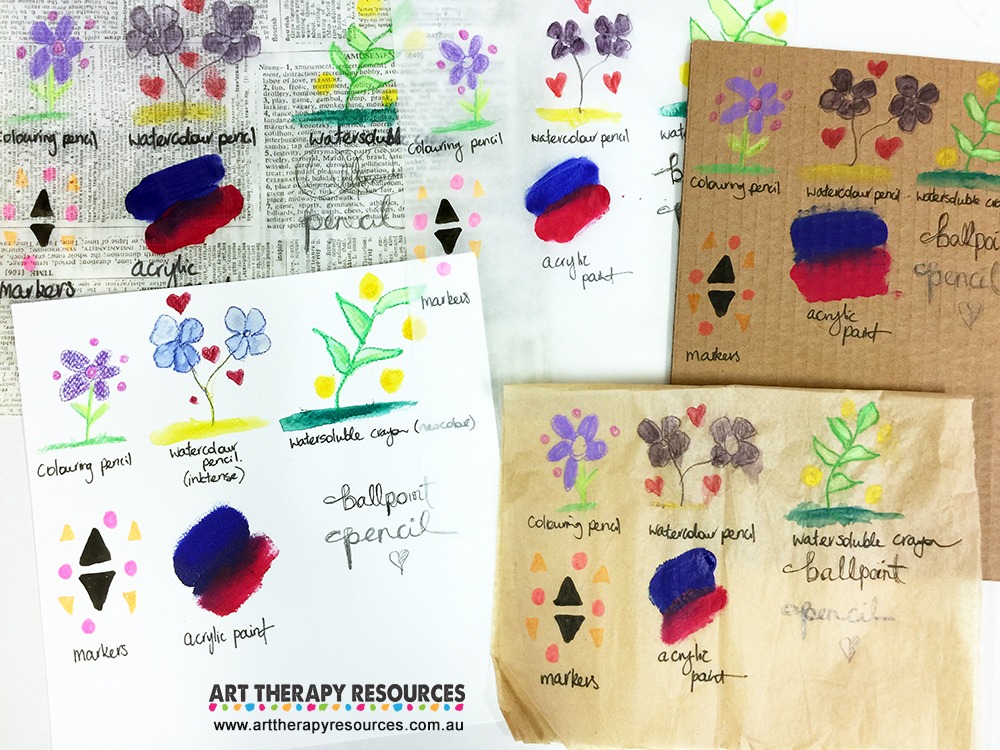
Products listed below include affiliate links for purchasing. Purchasing using affiliate links is at no extra cost to you.
The following art mediums were used when testing each paper type:
- colouring pencils – Prismacolor Premier Colored Pencils
- watercolour pencils – Derwent Inktense Colored Pencils
- watersoluble crayons – Caran d’Ache Classic Neocolor II Water-Soluble Pastels
- markers – Sharpie Stained Markers Brush Tip and Faber Castell Big Brush Pen Black
- acrylic paint – Dylusions Acrylic Paint Bundle
- ballpoint pen
- pencil
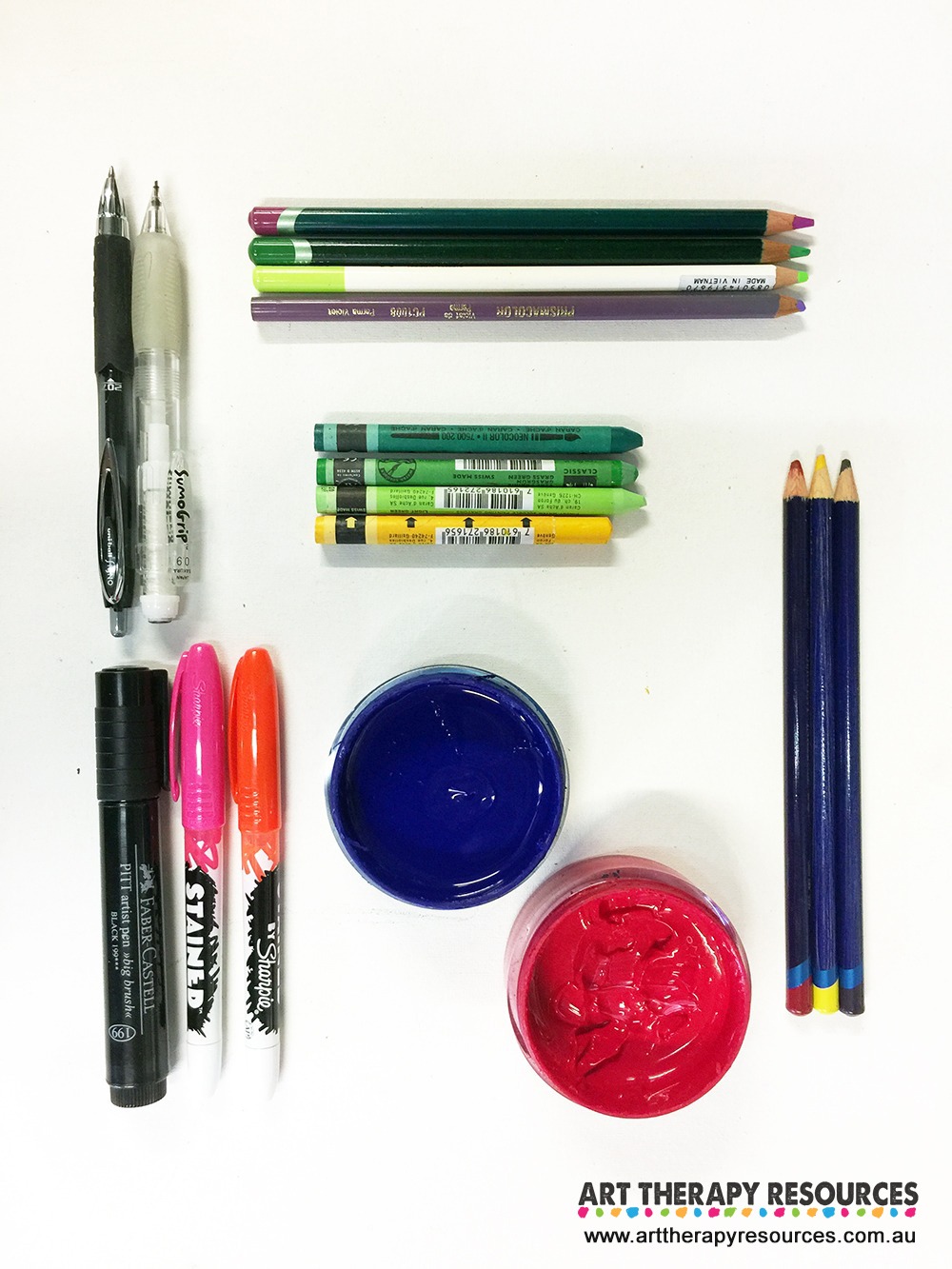
WATERCOLOUR PAPER
This 140lb watercolour pad is an economical way to purchase thicker weight paper that is suitable for watercolours, acrylic paints and other wet art media.
The paper pad is a good size for larger projects, however, it can also be cut down for smaller sized projects. This pad comes in a variety of sizes.
The pad is available in both fold over and spiral based book. The fold over option is easier to remove sheets quickly.
An image is included below using 7 different art mediums:
- colouring pencils
- watercolour pencils
- watersoluble crayons
- markers
- acrylic paint
- ballpoint pen
- pencil
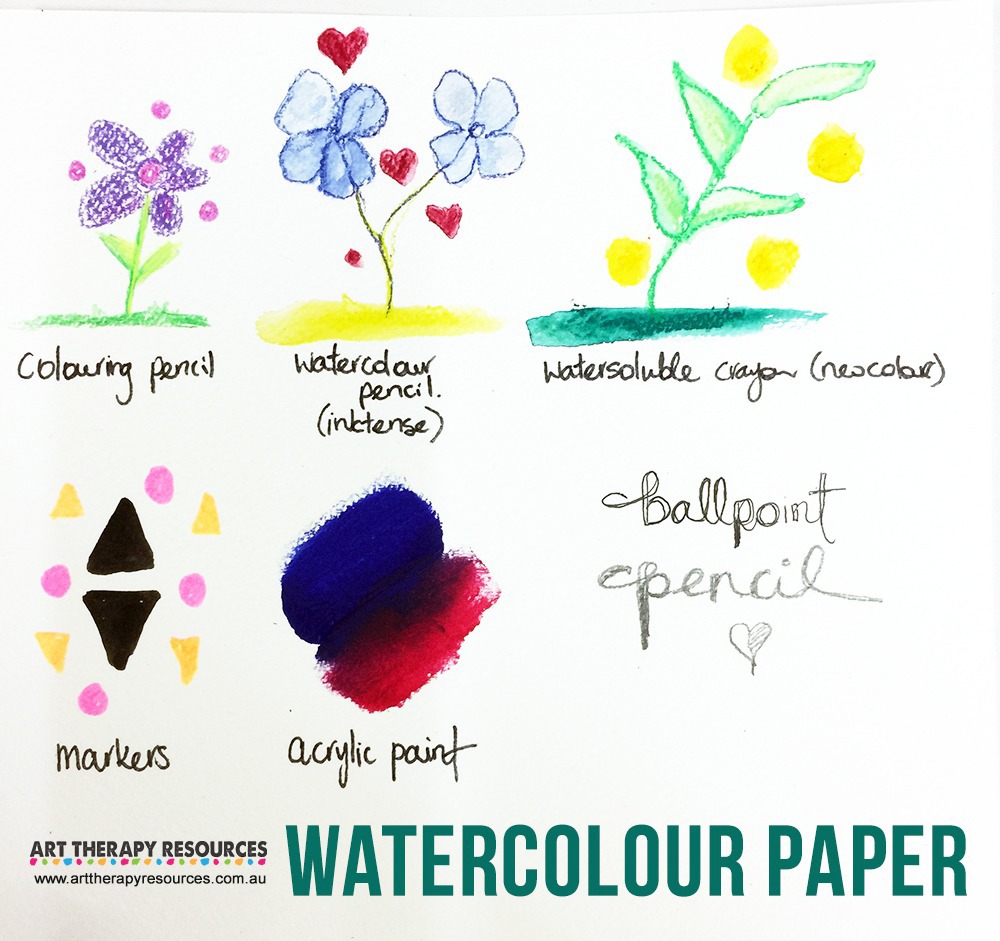
CARDBOARD
Grafix Medium Weight Chipboard Sheets, 12-Inch by 12-Inch, Natural, 25-Pack
Cardboard is good for using as a structural base for an artwork. You can use most art mediums on cardboard, however the ballpoint pen and pencil wasn’t as smooth to use.
An image is included below using 7 different art mediums:
- colouring pencils
- watercolour pencils
- watersoluble crayons
- markers
- acrylic paint
- ballpoint pen
- pencil
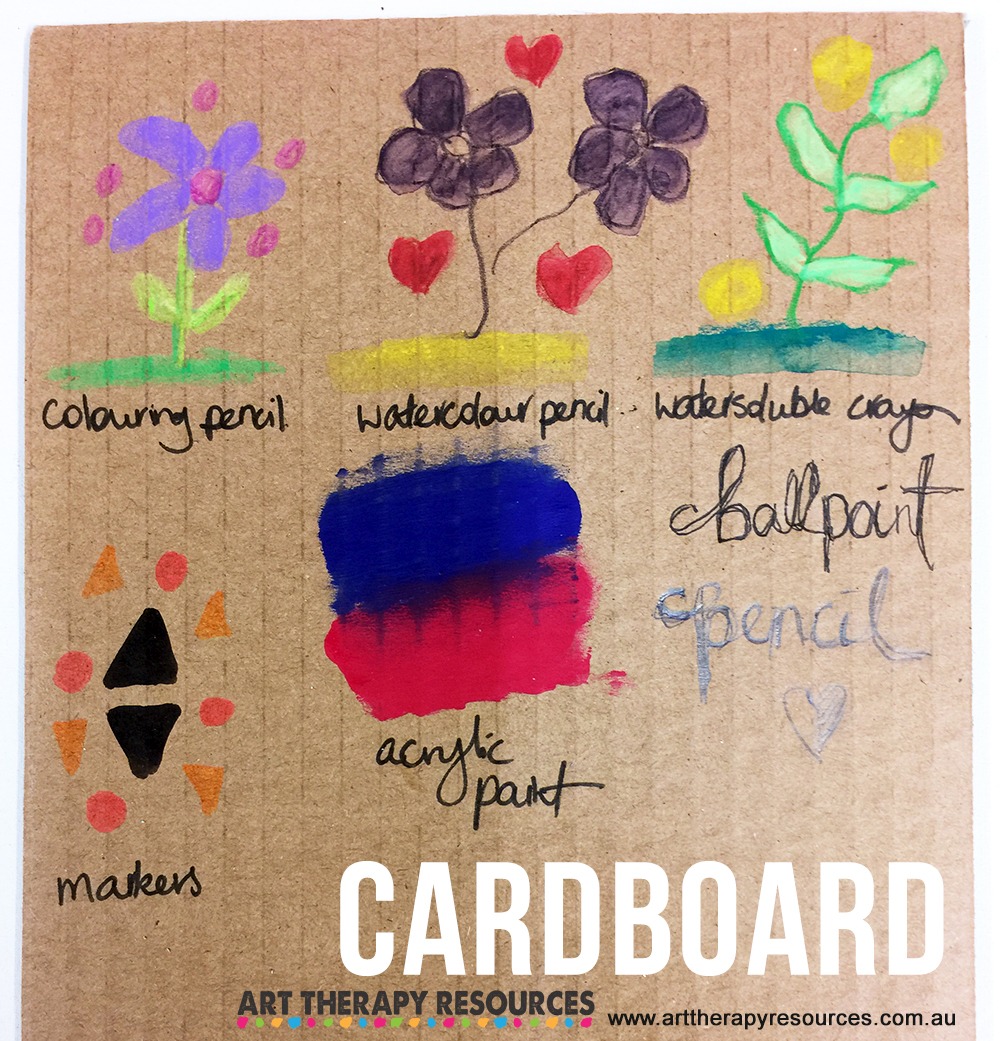
TRACING PAPER
Darice 9-Inch-by-12-Inch Tracing Paper, 100-Sheets
Tracing paper is used to trace images, however, in this image below we used it as a paper substrate with other art mediums. It was a nice alternative to watercolour and cardstock type papers. It is a very cheap alternative to traditional art papers. As it is also translucent this could provide additional creative opportunities.
An image is included below using 7 different art mediums:
- colouring pencils
- watercolour pencils
- watersoluble crayons
- markers
- acrylic paint
- ballpoint pen
- pencil
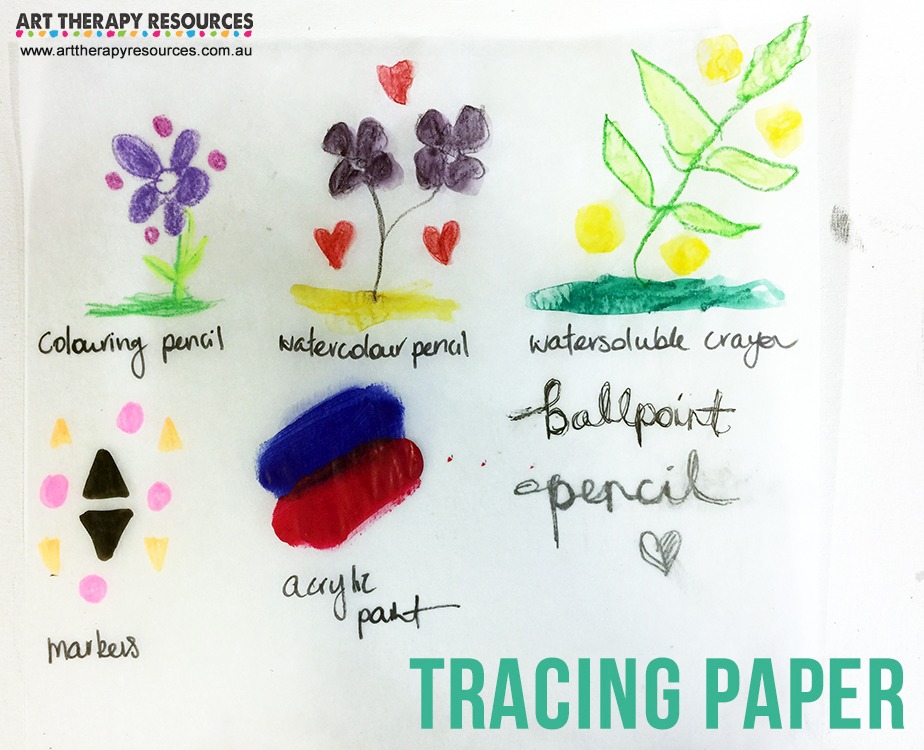
TISSUE PAPER
100-Piece Tissue Paper, 20 x 26-Inch, Assorted Colors
Tissue paper is great for creating structural elements as well as spraying with paint or acrylic sprays, however, it was difficult to use with the other art supplies such as pens, markers, pencils etc. The tissue paper couldn’t withhold the use of water and was prone to tears and rips.
An image is included below using 7 different art mediums:
- colouring pencils
- watercolour pencils
- watersoluble crayons
- markers
- acrylic paint
- ballpoint pen
- pencil
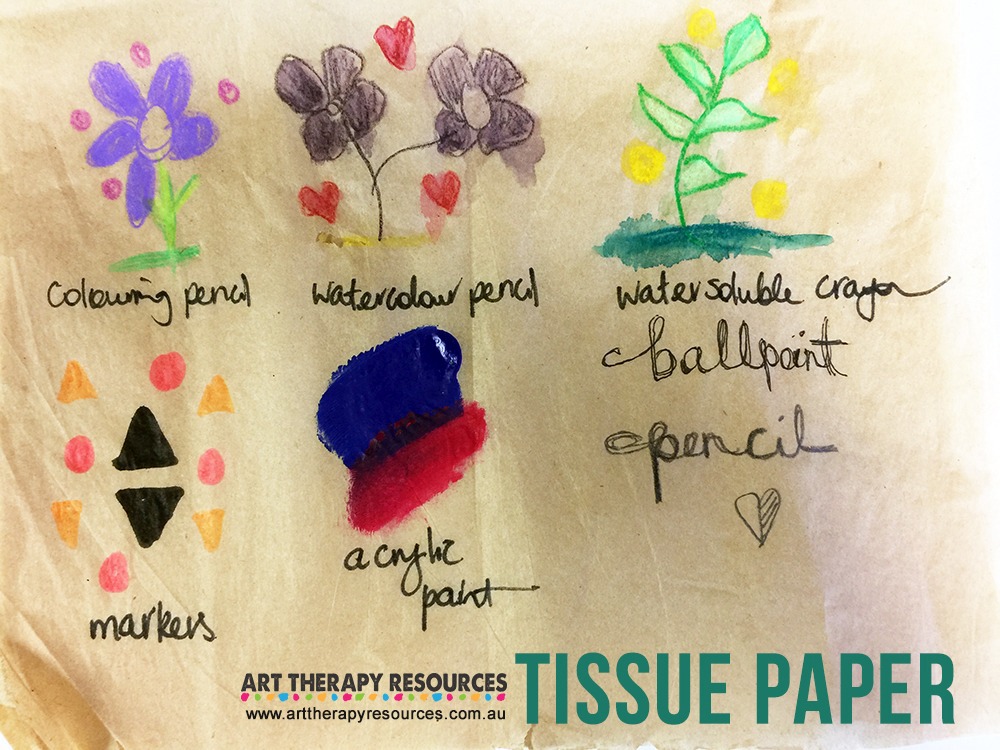
Printed Tissue Paper, London Newsprint

PRINTED PATTERN PAPER
You can find printed pattern papers at most craft and scrapbooking supply stores. Most scrapbooking paper is cardstock weighted and can withstand wet art mediums as well as wet glue adhesives for collaging.
Printed papers are especially useful for creating collages. The designs within the paper can help add to the story or form a starting point of the artwork created by your client.
An image is included below using the below supplies:
- cardboard
- acrylic paint
- printed papers
- tissues papers – plain and printed
- acrylic paint
- markers
- acrylic ink
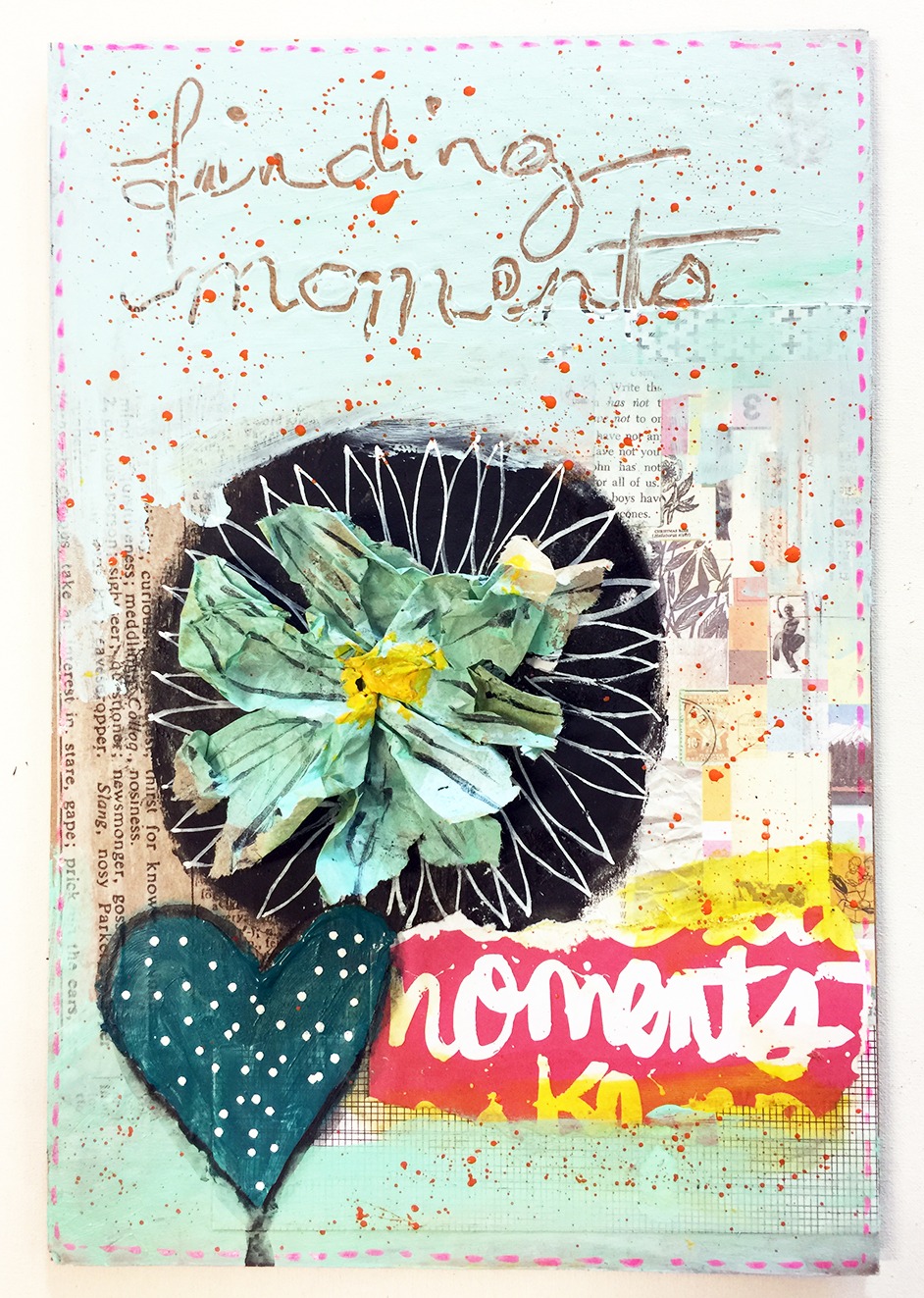
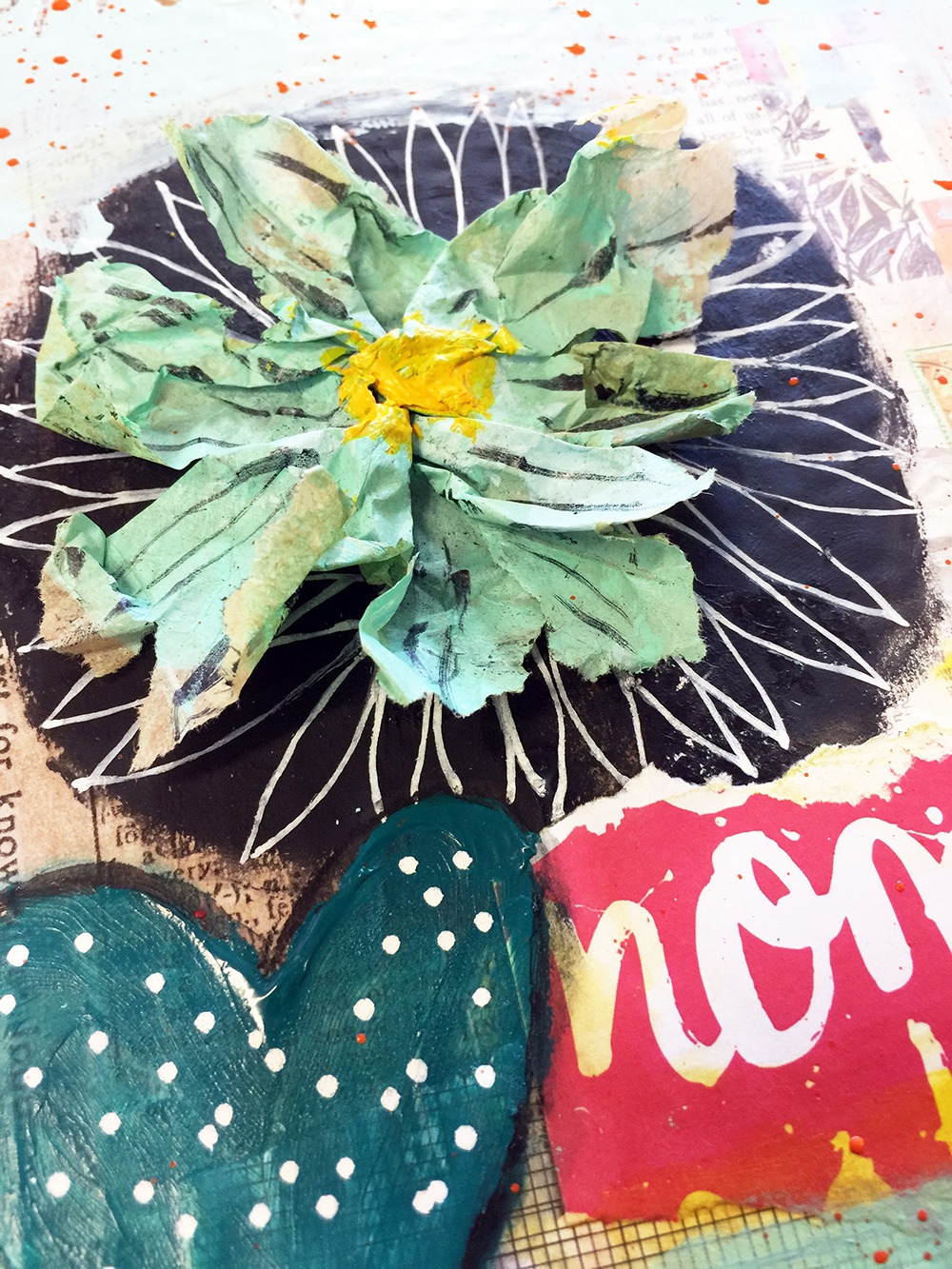
FREE DOWNLOAD: Art Therapy Supplies List
SIGN UP below to download the FREE Art Therapy Supplies List for suggested art therapy supplies in your practice.
Download the FREE Art Therapy Supplies List.

BUILD YOUR ART THERAPY REFERENCE MATERIALS:
Pin this image to your Pinterest board.
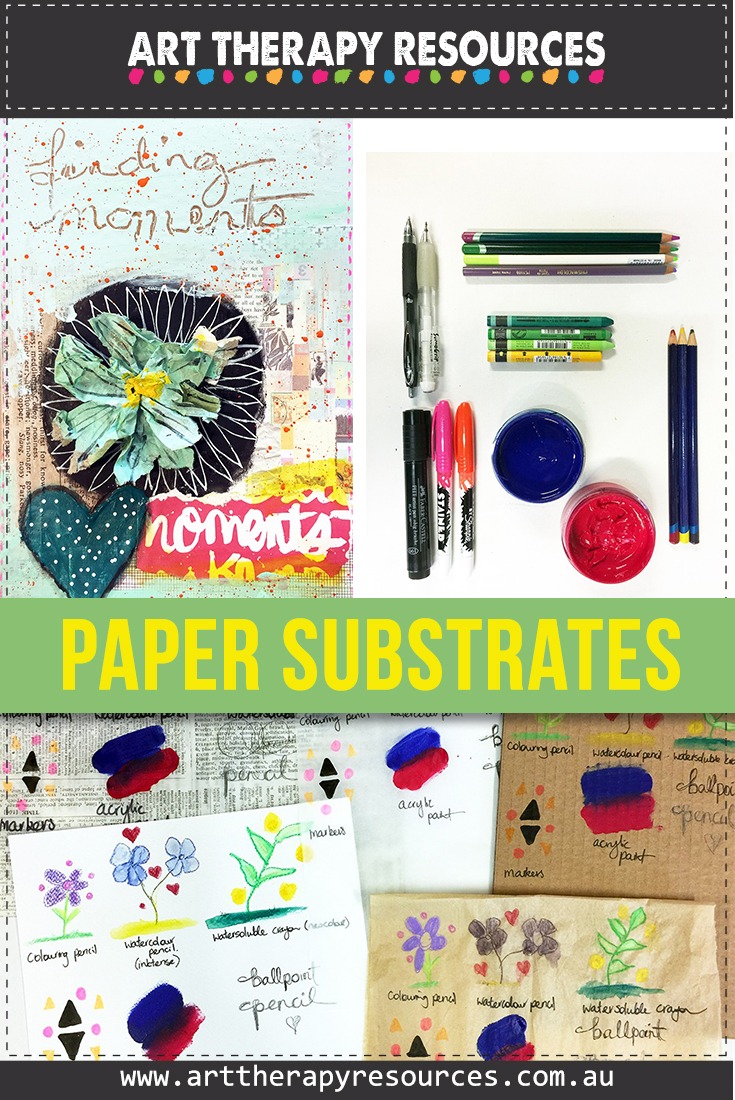
SHARE KNOWLEDGE & PASS IT ON:
If you’ve enjoyed this post, please share it on Facebook, Twitter, Pinterest. Thank you!
